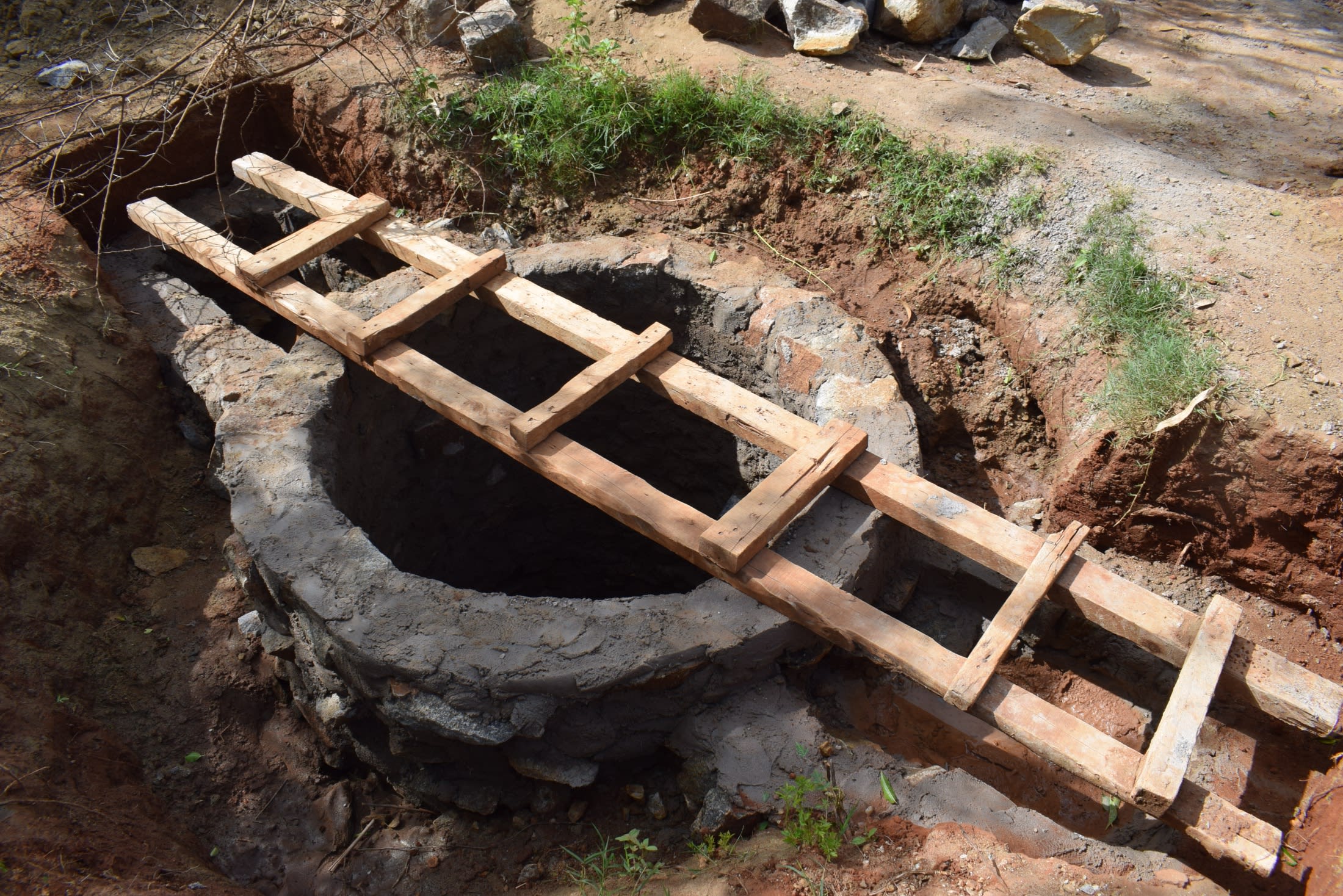Water scarcity is a great challenge in South Eastern Kenya. Most rivers flowing in this area are seasonal - they only flow during the rainy seasons. Afterward, the communities are faced with water scarcity challenges such as walking for long distances to access water and then having to dig scoop holes to fetch water from open water sources which lead to contracting waterborne diseases.
The residents of Kiteta and Muluti villages are fortunate. The Tawa River is relatively close to them, but for the nearly 2,500 people living in the area it is not a reliable source. That is changing.
Our main entry point into Kiteta Community has been the Muka Self-Help Group, which is comprised of households that are working together to address water and food scarcity in their region. These members are our hands and feet in both constructing water projects and spreading the message of good hygiene and sanitation to everyone. We started working with this group last year and completed our first project together. But one water point and dam are not enough to support 2,500 people. For some, it is not close enough.
"The water point has been very helpful to our community because less time is spent fetching water. However, walking to the water point and coming back home has been very hectic because the water source is very far," said Mutinda Muatha to our field team.
"The terrain that leads to the water point is very rough and steep which is risky for carrying water. At times, when we are sent to get water we get back home late which delays the duties to be done at the household level."
We typically work with self-help groups for 3 to 5 years on multiple water projects to ensure that everyone has access to a reliable water source. Because some people are still using open sources to meet their daily water needs.
"On very tough days, I fetch water from nearby scoop holes and the water is usually not clean because livestock depend on the same sources," said farmer Agnes Musyoka.
The water she is fetching is not safe. The water attained from the scoop holes is contaminated and exposes the community members to risks of contracting waterborne diseases such as typhoid, brucellosis, cholera, and dysentery, among others.
Most of the community members here rely on subsistence agriculture farming to make a living. They depend greatly on access to water in order to ensure that their crops succeed each of the growing seasons. Ms. Musyoka said she sometimes resorts to paying for water, but it is hard to afford it - hence why she turns to the scoop holes.
Many young adults migrate to urban regions to seek employment. Others remain to work in other casual labor jobs such as motorcycle taxi driving, construction, working on people's farms, and selling charcoal at Tawa market.
Reliable Water for Kitea
Our main entry point into Kiteta Community has been the Muka Self-Help Group, which is comprised of households that are working together to address water and food scarcity in their region. These members will be our hands and feet in both constructing water projects and spreading the message of good hygiene and sanitation to everyone.
Hand-Dug Well
This particular hand-dug well will be built adjacent to a sand dam project, which will supply clean drinking water once it rains. We have supplied the group with the tools needed for excavation. With the guidance of our artisans and mechanics, the excavated well will be cased, sealed with a well pad, and then finished with a new AfriDev pump.
Excavation takes a month or more on average, depending on the nature of the rock beneath. Construction of the well lining and installation of the pump takes 12 days maximum. The well will be lined with a concrete wall including perforations so that once it rains, water will filter in from the sand dam.
This well will be located in Kiteta Village and will bring clean water closer to families.
New Knowledge
These community members currently do their best to practice good hygiene and sanitation, but their severe lack of water has been a big hindrance to reaching their fullest potential.
We will hold hygiene and sanitation training sessions with the Muka Self-Help Group and other community members to teach about important hygiene practices and daily habits to establish at the personal, household, and community level. This training will help to ensure that participants have the knowledge they need to make the most out of their new water point as soon as water is flowing.
One of the most important topics we plan to cover is the handling, storage, and treatment of water. Having a clean water source will be extremely helpful, but it is useless if water gets contaminated by the time it is consumed. We will also emphasize the importance of handwashing.
We and the community strongly believe that all of these components will work together to improve living standards here, which will help to unlock the potential for these community members to live better, healthier lives.
We typically work with self-help groups for 3 to 5 years on multiple water projects. We will conduct follow-up visits and refresher trainings during this period and remain in contact with the group after all of the projects are completed to support their efforts to improve sanitation and hygiene.

 Protected Dug Well
Protected Dug Well
 Rehabilitation Project
Rehabilitation Project
































